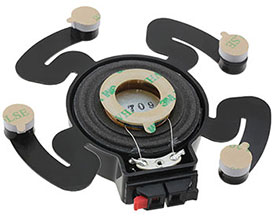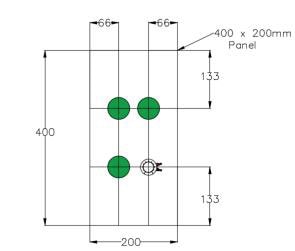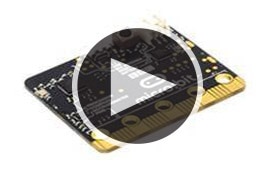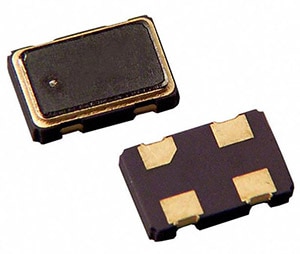The ASX10108-SPD-R Audio Exciter
 PUI's ASX10108-SPD-R Audio Exciter
PUI's ASX10108-SPD-R Audio Exciter
Recently I did a video using the ASX10108-SPD-R exciter from PUI. This is an 8 Ω exciter which works quite similarly to a traditional loudspeaker. The big difference is that this uses whatever surface it is set on to produce sound. The device works by exciting the surface of an object by directly coupling the voice coil to it. These will literally turn the surface of whatever they are applied to into a speaker. This is advantageous for many reasons and allows for the use of hidden speakers. Since these can be mounted to a surface, they can be mounted on the side that the user does not have to look at. It allows for great tonal reproduction with none of the aesthetic eye sores. Because these can be hidden, they are much more difficult to vandalize. A speaker is very easy to damage; a small tear on a speaker’s diaphragm can cause large problems for performance. Environmental problems can be remedied using IP67 or greater enclosures for these: they would just turn the enclosure into a speaker.
There are some considerations that go into the surface that will be used. The denser a material is, the greater the high frequency output will be. Along with this, the more bendable the material is, the better the bass and mid-range outputs will be. The ASX10108-SPD-R comes with VHB tape from 3M which makes for easy mounting and spring loaded push terminals for easy wiring.
PUI has also laid out some guidelines for placement on a surface. By taking a panel and dividing it into thirds vertically and horizontally it is possible to find the best placement points where the lines intersect like in Figure 1.
 Figure 1 – Ideal Mount Location (Courtesy of PUI Audio)
Figure 1 – Ideal Mount Location (Courtesy of PUI Audio)
This product would be great for any situation that needs sound with discretion. I personally took this product home and used it on several different surfaces of my house. When I used the kitchen counter, which was laminate, this device produced a nice high end but lacked a bit on the mid-range and bass frequencies. I got different results when I used the drywall in my living room. Depending upon how much surface area was available, there was pretty good mid-range and bass response (the larger the piece of drywall, the better the bass). I moved on to the cabinets in my kitchen, and they worked very well. They offered highs, lows, and mid-range pretty equally giving a nice sound. The last place that I used the exciter in my house was on a cheap wooden door to a closet. This had great high end, the mid-range was very good, and the bass was stellar. The closet created a chamber which helped the bass out a lot; it was like hitting the bass boost button on a stereo.
More information about this product can be found on EEWiki and if there are any questions feel free to ask them in the TechForum.

Have questions or comments? Continue the conversation on TechForum, Digi-Key's online community and technical resource.
Visit TechForum










